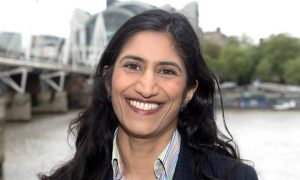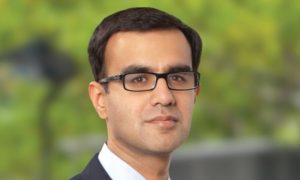The long road: Dealing with diversity at the Bar
A lower proportion of those taking silk were women or from ethnic minorities this year, but lawyers believe the bigger problem lies elsewhere
January 22, 2019 at 02:30 AM
6 minute read
Becoming a QC has never been easy. Long viewed as a tier of the profession that is only accessible to the privileged few, there is increasing scrutiny applied to the list of those who make the rank each year.
Of key interest is whether diversity is improving. After all, the QC population is overwhelmingly white and male. Only 15% of QCs are women, and nine out of every 10 are white, according to figures from The Bar Council.
Things are improving. During the past decade, there has been an increasing proportion of women and ethnic minorities promoted to the QC rank. In early 2018 this reached record levels, when more than a quarter of those taking silk were women and 15% were from ethnic minorities. Just as significantly, the success rate of women and ethnic minorities applying outstripped their white and male counterparts.
But the numbers in this year's silk round figures failed to maintain the same level of momentum. Women made up about 27% of successful applicants again but only 12% were black, Asian and minority ethnic (BAME) lawyers.
Notably, the success rate of women fell from 64% in 2018 to 58%. And the success rate of BAME candidates fell even further. Whereas last year, more than half (54%) of BAME applicants saw success, this year just 43% did. Conversely, white applicants saw their success rate improve from 42% to 45%.
Annual rollercoaster
It is unfair to focus too much on specific years, according to the Bar Council's head of diversity and equality Sam Mercer. She argues that, due to the relatively small number of BAME applicants each year, slight changes year on year can cause "significant swings" in the overall results.
Referring to last year's record rate as "a blip", Mercer says "you have to look at patterns over time", and that "figures do tend to go up and down considerably with BAME applicants".
In 1995, when records began, just one out of 71 successful applicants was BAME. This rocketed up to 22% of those taking silk in 1998, only to fall to 12.5% in 2000. Numbers continued to fluctuate, hitting 49% in 2009, and 60% the following year, only to plummet to 14% in 2012.
So how much of a big deal is the latest fall?
For White & Case London arbitration co-head Aloke Ray – who was among the latest appointments – this year's downturn was a surprise, but "not yet a cause for concern".
"The right things are being done, and the authorities are very conscious about what's going on," says Ray.
He concedes, however, that it is "right that people talk about it", "take steps to improve the situation", and "encourage people from as diverse backgrounds as possible to apply".
Harini Iyengar, a barrister at 11 King's Bench Walk who also stood for the Women's Equality Party, says that, while this year's numbers are not in themselves too bad, there remains an entrenched "struggle to interest senior people who haven't been affected by the issues".
There is a struggle to interest senior people who haven't been affected by the issues
 Harini Iyengar
Harini IyengarIyengar believes there needs to be a "cultural change" to address things like unconscious bias, and that such change can be brought about by the regular provision of clear and accessible data. She says: "Data can help prove the facts to people who haven't been personally affected, so they believe that others have been affected by barriers."
City-centric
Others believe the figures reflect a different kind of diversity problem – one related to region. That is because the further north you get, the more acute the disparities become. This year, in the Northern Circuit, among those successfully taking silk, none was BAME, and just one was a woman.
"This is Suffragette city – but there's no revolution here," says Sally Penni, a barrister at Manchester's Kenworthy's Chambers. She suggests that the Bar has always tended to be London-centric, with attention time and again turning to the capital while circuits outside of the City are often sidelined.
Mercer at The Bar Council responds that her organisation is keen to "recognise that the demographic profile of the Bar" will, like that of the country, "vary by region".
However, highlighting that the population of the UK as a whole is 11% BAME, while London's BAME population is closer to 40%, she agrees that there is work to be done.
Mercer points to mentoring schemes such as the Western Circuit Women's Forum, a programme for Midlands-based lawyers, as important drivers.
And the application criteria emphasises diversity, with candidates required to talk about the steps they have taken to increase diversity in their profession, according to new silk and White & Case partner Dipen Sabharwal.
 White & Case partner Dipen Sabharwal QC
White & Case partner Dipen Sabharwal QCWhile he suggests there is generally some "normal standard deviation from year to year", a deeper problem is simply that "there are not enough BAME candidates applying".
There are not enough BAME candidates applying
But hopefully this should start to correct itself over time.
"To apply to be a QC you must have a requisite amount of experience to be in that position," he says. "My sense is that the BAME community is growing [in law]. So an accumulation of experience will reflect in later years – the groundwork that is being laid now will bear fruit in years to come.
"People tend to apply if they see others like them who have been there. With more BAME silk being appointed now, there will be more role models to encourage people to apply."
This content has been archived. It is available through our partners, LexisNexis® and Bloomberg Law.
To view this content, please continue to their sites.
Not a Lexis Subscriber?
Subscribe Now
Not a Bloomberg Law Subscriber?
Subscribe Now
NOT FOR REPRINT
© 2025 ALM Global, LLC, All Rights Reserved. Request academic re-use from www.copyright.com. All other uses, submit a request to [email protected]. For more information visit Asset & Logo Licensing.
You Might Like
View All
International Arbitration: Key Developments of 2024 and Emerging Trends for 2025
4 minute read
The Quiet Revolution: Private Equity’s Calculated Push Into Law Firms
5 minute read
'Almost Impossible'?: Squire Challenge to Sanctions Spotlights Difficulty of Getting Off Administration's List
4 minute read
Trending Stories
Who Got The Work
Michael G. Bongiorno, Andrew Scott Dulberg and Elizabeth E. Driscoll from Wilmer Cutler Pickering Hale and Dorr have stepped in to represent Symbotic Inc., an A.I.-enabled technology platform that focuses on increasing supply chain efficiency, and other defendants in a pending shareholder derivative lawsuit. The case, filed Oct. 2 in Massachusetts District Court by the Brown Law Firm on behalf of Stephen Austen, accuses certain officers and directors of misleading investors in regard to Symbotic's potential for margin growth by failing to disclose that the company was not equipped to timely deploy its systems or manage expenses through project delays. The case, assigned to U.S. District Judge Nathaniel M. Gorton, is 1:24-cv-12522, Austen v. Cohen et al.
Who Got The Work
Edmund Polubinski and Marie Killmond of Davis Polk & Wardwell have entered appearances for data platform software development company MongoDB and other defendants in a pending shareholder derivative lawsuit. The action, filed Oct. 7 in New York Southern District Court by the Brown Law Firm, accuses the company's directors and/or officers of falsely expressing confidence in the company’s restructuring of its sales incentive plan and downplaying the severity of decreases in its upfront commitments. The case is 1:24-cv-07594, Roy v. Ittycheria et al.
Who Got The Work
Amy O. Bruchs and Kurt F. Ellison of Michael Best & Friedrich have entered appearances for Epic Systems Corp. in a pending employment discrimination lawsuit. The suit was filed Sept. 7 in Wisconsin Western District Court by Levine Eisberner LLC and Siri & Glimstad on behalf of a project manager who claims that he was wrongfully terminated after applying for a religious exemption to the defendant's COVID-19 vaccine mandate. The case, assigned to U.S. Magistrate Judge Anita Marie Boor, is 3:24-cv-00630, Secker, Nathan v. Epic Systems Corporation.
Who Got The Work
David X. Sullivan, Thomas J. Finn and Gregory A. Hall from McCarter & English have entered appearances for Sunrun Installation Services in a pending civil rights lawsuit. The complaint was filed Sept. 4 in Connecticut District Court by attorney Robert M. Berke on behalf of former employee George Edward Steins, who was arrested and charged with employing an unregistered home improvement salesperson. The complaint alleges that had Sunrun informed the Connecticut Department of Consumer Protection that the plaintiff's employment had ended in 2017 and that he no longer held Sunrun's home improvement contractor license, he would not have been hit with charges, which were dismissed in May 2024. The case, assigned to U.S. District Judge Jeffrey A. Meyer, is 3:24-cv-01423, Steins v. Sunrun, Inc. et al.
Who Got The Work
Greenberg Traurig shareholder Joshua L. Raskin has entered an appearance for boohoo.com UK Ltd. in a pending patent infringement lawsuit. The suit, filed Sept. 3 in Texas Eastern District Court by Rozier Hardt McDonough on behalf of Alto Dynamics, asserts five patents related to an online shopping platform. The case, assigned to U.S. District Judge Rodney Gilstrap, is 2:24-cv-00719, Alto Dynamics, LLC v. boohoo.com UK Limited.
Featured Firms
Law Offices of Gary Martin Hays & Associates, P.C.
(470) 294-1674
Law Offices of Mark E. Salomone
(857) 444-6468
Smith & Hassler
(713) 739-1250









